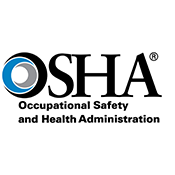 What is heat illness?
What is heat illness?
Heat illness is a medical condition resulting from the body’s inability to cope with a particular heat load and includes, but is not limited to, heat cramps, heat rash, heat exhaustion, fainting, and heatstroke. Prolonged or intense exposure to hot conditions and heavy physical work even in cooler conditions can lead to your body overheating. Symptoms of heat illness may not be recognized initially and can quickly progress.
Why is it important to know about heat illness?
Heat illness is preventable but, if left unchecked, could lead to death. People who work outside, especially in the summer, are exposed to heat and can get heat illness. Heat illness can also lead to injuries. Workers are more likely to get injured if they get tired or dizzy from the heat while working. Heat exposure can also lead to heatstroke, a condition that can be fatal. What you learn here will prepare you for helping your co-workers and yourself stay safe when working in hot weather.
Workplace Tools
Heat Education and Awareness Tools (HEAT Toolkit) webpage
Washington State Heat Rule
On June 27, 2023, the Washington State Department of Labor & Industries (L&I) adopted updates to Outdoor Heat Exposure rules to prevent heat-related illness and reduce traumatic injuries associated with heat exposure, effective July 17, 2023. The adopted rule for agriculture (WAC 296-307-097) includes requirements for shade, rest, and acclimatization, and lowers the temperatures at which some preventive actions must be taken. The requirements are year-round, in effect whenever workers are exposed to outdoor heat. Visit the WA Department of Labor and Industries webpage to learn more about these requirements.
Oregon State Heat Rule
Oregon adopted two permanent rules in 2022 to protect workers from heat-related illnesses. Rule OAR 437-004-1131 applies to agricultural workplaces. Overall, the adopted requirements address access to shade; drinking water; high heat practices, including the development of heat illness prevention break schedules for certain temperature thresholds; emergency medical and actions plans; acclimatization plan; heat illness prevention plan; supervisor and employee training; and training documentation. Visit the OR Occupational Safety and Health Administration webpage to learn more about these requirements.











